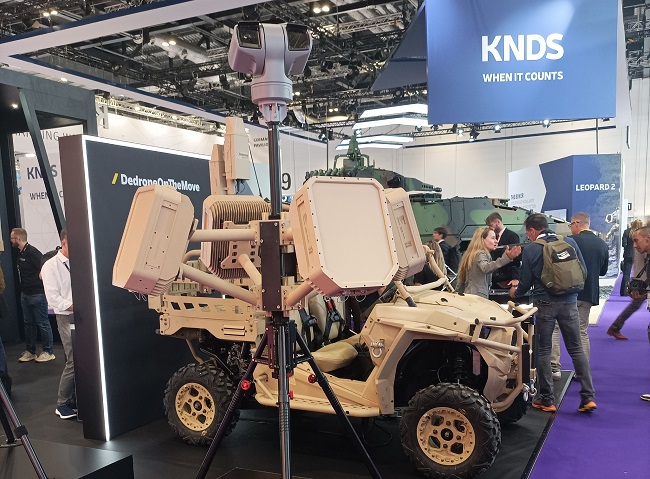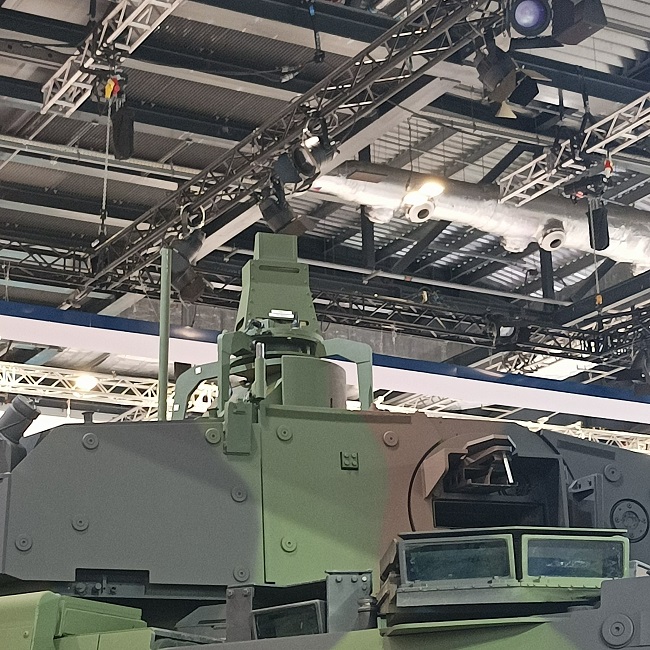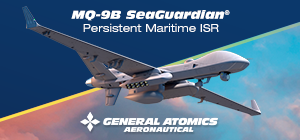
Multiple vehicles on the DSEI floor, at multiple stands, have one thing in common: a compact antenna which is none other than the Dedrone On-the-move passive radio frequency detector. An attentive eye will see it on the BOXER RCT30 at the KNDS stand, on the HMT400 Mk3 by Supacat, on the Polaris MRZR and on the Australian BUSHMASTER, for example.

This proliferation comes on the back of an impressive performance by the system at the FLYTRAP extercise-demonstration in Germany, carried out in combination by the US and British Army to look at novel counter-drone (C-UAV) solutions within the VANAHEIM framework for joint assessment and procurement. Dedrone's RF detector was the only system to successfully detect all drones involved in the event.
The RF detector can be carried on pretty much any vehicle and can easily distribute its findings forward by MANET radio and other communications means, getting the data directly to ATAK terminals for the single dismount. It can also be integrated more comprehensively onto a specific vehicle, as exemplified by the BOXER RCT30 case. Here, the system is fully connected into the fire control system (FCS), helping to target drones with extremely high accuracy by providing accurate position data and firing solution.
This precision is part of the wider Dedrone offer: the Company manufactured a portable, "Smart" jammer-gun for the dismount which enables an extremely selective and accurate application of jamming to bring down a specific target without affecting other drones in the same area.
Dedrone offers a wide variety of combined, deployable static sentry and jamming solutions. It offers a fully integrated traler-mounted solution which is being actively used outside ExCel to protect the DSEI venue itself, and various solutions on tripods and mounts that can integrate radars from various suppliers, optical sensors and other solutions, combining them to compile an extremely accurate air picture.
Dedrone's products come with an invaluable library of data, RF signatures and information about not just commercial drones, but the Russian drones detected on the field in Ukraine. Once a drone type is fully classified within the library, Dedrone's sensor fusion software compiles an extremely granular list of information about all RF contacts, integrated with radar tracks and footage from optical cameras. Serials, RF link information, the position of the pilot, can all be detected, classified and supplied to the Police in civilian security applications.









.png)
